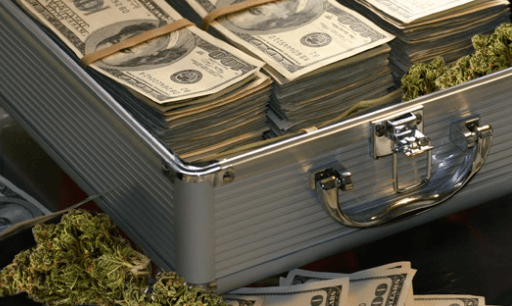Written by Abraham Finberg, MBA CPA
Tax auditors rely on bank accounts as an independent third party to prove you actually had expenses. They are at a loss when a cannabis company does not have a bank account. As a rule of thumb, when a tax auditor is “at a loss” they deny all expenses and leave it up to you to prove you actually spent money on the expenses.
The following are ways to prove you spent cash on a purchase. These items are all pieces of the expense puzzle and work best together to confirm your costs. While any of these provide partial proof, they are much more convincing taken as a whole.
Get a receipt
First off, if you have a receipt you probably paid for something. The better receipts are register calculated with a date stamp and a description of how you paid for your expense (i.e. cash, credit card, check etc.). This works for standard retail stores such as hydroponics stores. What about receipts from a printer or handwritten receipts? Or failing that, what about a log book signed by the vendor? These type of receipts are weaker because the auditor may think you created the receipts after the fact for the audit. If you use a log book, make sure all the details are in the book including a signature by the person receiving the product and the patient providing the product. You also need to make sure the details reconcile with the other techniques in the next paragraphs. For example, if you buy 1 pound of cannabis flowers on January 10th from Acme Cultivator for $1,500.00, make sure your point of sale system shows the purchase on that date for that amount and the cash register shows a payment of $1,500.00 for 1 pound of cannabis flowers.
Use a cash register enabled point of sale system (POS)
A good POS records the user log in information for a transaction. That means if you purchased 1 pound of cannabis flowers on January 10th from Acme Cultivator for $1,500.00, your inventory should be higher by 1 pound after the transaction and your cash register should be lower by $1,500.00 with a trail showing who performed the transaction. Although this rarely happens, the auditor has the option of asking the employee whether they actually performed the transaction.
Confirming purchases with the largest vendors
Financial statement audits routinely contact the largest vendors to confirm the sale of a product. It’s not as common in a tax audit however this may become more frequest with outside auditors hired by a city to perform the tax audit. If you have a handwritten receipt without any information about the person you bought the product from the auditor can’t confirm the purchase. If they can’t confirm the purchase they will be more likely to deny the expense.
Make sure the data match
Hopefully by now you are beginning to see a pattern; when you don’t have a bank account you combine weaker proofs of your expenses that support each other. You have a receipt with a lot of detail, your point of sale matches the receipt, your cash register matches the cash paid and your vendors and employees can vouch for the transaction. It’s never one specific transaction, it’s whether the transactions match.
Disclaimer: This article has been prepared and published for informational purposes only and is not offered, nor should be construed, as legal advice.

